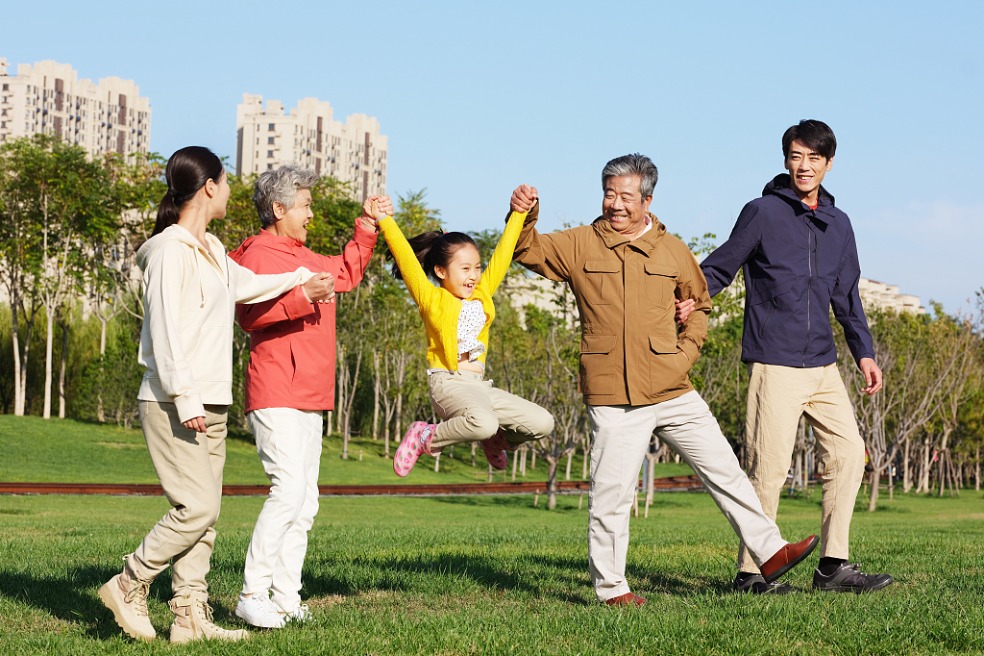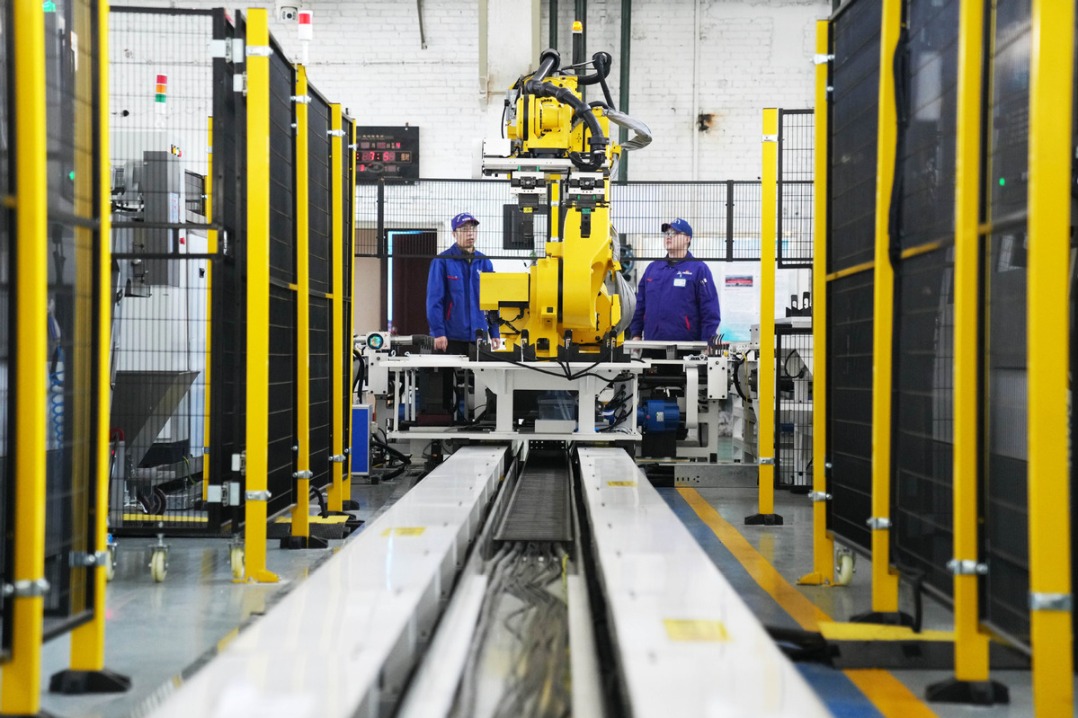Human Rights in Xinjiang - Development and Progress

The State Council Information Office of the People's Republic of China
June 2017
Contents
Foreword
I. Political Rights
II. Civil Rights
III. Economic Rights
IV. Social Rights
V. Cultural Rights
VI. Environmental Rights
VII. Right to Freedom of Religious Belief
VIII. Rights of Women, Children, the Elderly and Disabled
Foreword
Realization of full human rights is an ideal, one that humankind has pursued for as long as we can remember. It is also a goal that the Chinese people, including people of the various ethnic groups in Xinjiang, have worked hard to reach.
Before the founding of the People's Republic of China (PRC) in 1949, the ethnic groups of Xinjiang suffered oppression from invading foreign forces, the feudal exploiting class and the privileged religious hierarchy. At the bottom of the social ladder, they were deprived of basic human rights. The founding of the PRC and the socialist system prepared a fundamental political prerequisite and laid the institutional basis for the people of Xinjiang's ethnic groups to enjoy such rights. In 1955, the system of regional ethnic autonomy was implemented in Xinjiang, offering further guarantee to the Xinjiang people in exercising their right as masters of the country. Since 1978, when China launched its epoch-making reform and opening-up drive, a new historical phase has been ushered in the economic and social development of Xinjiang, and people of the various ethnic groups in Xinjiang have seen great progress in the protection of their human rights.
The central government has over the years set great store by Xinjiang. It has taken effective measures to develop the economy, improve people's living standards, enhance the well-being of the public, promote ethnic unity and progress, and safeguard the basic rights of all ethnic groups. In particular, since the 18th National Congress of the Communist Party of China (CPC) was held in 2012, the CPC Central Committee with Comrade Xi Jinping at the core has worked hard to promote economic, political, cultural, social and ecological progress across the country. This means following the people-oriented principle, and forging new ideas of innovative, coordinated, green, and open development shared by all. Committed to the progress of Xinjiang and its people, the CPC Central Committee has pooled the strength of the nation to develop the region. In recent years, it has, proceeding from the overall development of the causes of the Party and state, constantly enriched and developed its core strategies for the development and governance of Xinjiang by making maintaining the social order and lasting political stability the overall objective of work in relation to Xinjiang. It called governing Xinjiang in accordance with law, maintaining stability in Xinjiang through ethnic solidarity, and being committed to the development of Xinjiang for a long time to come; keeping to the goal of all ethnic groups working together for common prosperity and development; making energetic efforts to press forward with the development of various undertakings in Xinjiang and focusing on the protection and improvement of the people's living standards; and taking all necessary steps to ensure the people of various ethnic groups the equal right to participation and in development, and equal access to the fruits of development.
I. Political Rights
Xinjiang has been home to numerous ethnic groups since remote antiquity, and there are now 56 ethnic groups residing on this vast piece of land. Irrespective of their size of population, degree of development, and religious faith, the people of all Xinjiang's ethnic groups enjoy the same status and the same rights, and must fulfill the same obligations in accordance with the law. Their political rights as citizens are fully protected.
The system of regional ethnic autonomy is in place. Based on the principle of safeguarding national unity, the system of regional ethnic autonomy provides a strong institutional guarantee for the ethnic groups of Xinjiang to exercise their right of autonomy, administer their own local affairs, and participate as equals in administering state affairs. According to China's Constitution and relevant state laws, the legislature of the autonomous region, while enjoying the legislative power entitled to provincial-level administrative divisions as prescribed by law, has the power to enact regulations on the exercise of regional autonomy and other particular regulations in line with the local political, economic and cultural conditions. By the end of 2016, the autonomous regional people's congress and its standing committee had formulated in total 372 local regulations (including 153 already in effect), passed 52 regulatory resolutions and decisions, and approved 113 separate regulations and other regulations submitted by the various cities, autonomous prefectures or autonomous counties.
The right to vote and right to be elected are fully protected. In Xinjiang, as elsewhere in China, citizens aged 18 or above enjoy the right to vote and the right to be elected in accordance with the law. As the Constitution and relevant state laws prescribe, people of all ethnic groups in the autonomous region directly elect deputies to the people's congresses at county (city or urban district) and township (town) levels, and these deputies then elect deputies to the prefecture (prefecture-level city) people's congress, the people's congress of the autonomous region, and the National People's Congress (NPC). The 12th NPC has a total of 60 deputies from Xinjiang, of whom 38 (63 percent) are from ethnic minority groups. The 12th People's Congress of Xinjiang Uygur Autonomous Region is formed by 550 deputies, of whom 363 (66 percent) are of ethnic minority origins.
Steady progress has been observed in consultative democracy. Within the institutional framework of consultative democracy, the CPPCC (Chinese People's Political Consultative Conference) organizations at all levels in the autonomous region have actively innovated the forms, enriched the content and developed platforms of consultation to encourage more extensive participation and administration of state affairs by people from all ethnic groups and all walks of life, thus bringing into place initially a wide-ranging and multi-tiered regular framework of consultative democracy. Members of CPPCC organizations at all levels have conducted in-depth research and drafted bills that actively reflect social conditions and public opinion; they constantly pursue initiatives to facilitate democratic scrutiny. Among members of the 12th CPPCC National Committee, 31 come from Xinjiang, of whom 18 (58 percent) are members of ethnic minorities. The 11th CPPCC of Xinjiang Uygur Autonomous Region has 479 members, of whom 228 (48 percent) are members of ethnic minorities. As of March 2017, the 11th CPPCC of Xinjiang had submitted a total of 4,920 proposals covering politics, the economy, culture, education, science and technology and other fields.
The right of ethnic minority groups to participate in public affairs is guaranteed. Xinjiang is the only autonomous region in China with all three levels of autonomous divisions (i.e., autonomous region, autonomous prefecture and autonomous county). It now has under its jurisdiction five autonomous prefectures and six autonomous counties. People's congresses and people's governments of these autonomous administrative divisions at different levels exercise the autonomous power to administer their local affairs. Chairperson of the autonomous region, governors of autonomous prefectures, and heads of autonomous counties are all citizens from the ethnic groups exercising regional autonomy of the said areas. In 1950, there were only about 3,000 ethnic minority officials in Xinjiang. By 1955, this figure had increased to 46,000. In 2016, the number of ethnic minority officials in the region's civil service reached 91,076, accounting for 40 percent of the region's total. Of them, women officials of ethnic minority origins accounted for more than 66 percent of the total of female officials in Xinjiang.
Community-level democratic rights are guaranteed and respected. The Measures of Xinjiang Uygur Autonomous Region for Implementing the Organic Law of the Villagers' Committees of the People's Republic of China, the Procedures of Xinjiang Uygur Autonomous Region on the Election of the Villagers' Committee, and the Implementation Measures of Xinjiang Uygur Autonomous Region on Making Village Affairs Transparent have been revised and implemented. The Opinions on Regulating and Strengthening Community Work, and the Implementation Opinions on Building Stronger Service Capabilities for Town and Township Governments have been formulated. Steady improvement has been seen in the community-level legal framework. The system of community-level self-governance is being strengthened, while systems of democratic election, democratic management, democratic supervision, and publicity of affairs have kept improving. Well-defined systems, standards and procedures are being followed in community-level democratic consultation.
II. Civil Rights
Xinjiang fully respects and effectively guarantees the civil rights of its citizens in accordance with the law, by respecting and protecting life and property, safeguarding the right to a fair trial, and promoting free expression.
Life and property are respected and protected. Since the 1990s, violent terrorists, nationalist separatists, and religious extremists have plotted and committed a series of violent terrorist crimes, causing loss of life to and damaging the property of people of all ethnic groups. In 2009, the July 5 riot in Urumqi killed 197, injured more than 1,700, and caused colossal damage to property. The Kunming railway station terrorist attack of March 1, 2014 caused 31 deaths and injured another 141. The Xinjiang Uygur Autonomous Region has taken a series of measures designed to strike against violent terrorist crimes, strengthen social protection and control, modernize the governance system and capacity, and safeguard the lives and property of all the people of Xinjiang, whatever their ethnic group. These measures include the promulgation and implementation of the Measures of the Xinjiang Uygur Autonomous Region on Enforcement of the Anti-Terrorism Law of the People's Republic of China.
The right to fair trial is maintained. Judicial organs in Xinjiang uphold the principles of legally prescribed punishment, presumption of innocence, and evidentiary adjudication, and fully protect citizens' right to fair trial at all stages from investigation to prosecution, to trial and execution. The right of suspects and criminal defendants to defense is guaranteed in accordance with the law. Citizens' right to use the spoken and written languages of their own ethnic groups in legal proceedings is protected. By implementing the Interim Measures for Legal Assistance of the Xinjiang Uygur Autonomous Region, the right to legal assistance for disadvantaged groups is guaranteed. With constant improvement in the judicial relief system, the legitimate rights and interests of indemnity claimants are safeguarded, and the right to relief of disadvantaged groups is protected. In 2016, people's courts at various levels in Xinjiang settled 298 state compensation and judicial relief cases, deferring, reducing or exempting the litigation costs to a value of RMB26.7 million. A platform for judicial openness was established to release information on judicial proceedings, so as to ensure the public's right to information. From 2014 to 2016, people's courts at various levels in Xinjiang released more than 210,000 effective judgment documents on China Judgments Online. In 2016, there were 4,569 lawyers in Xinjiang.
The right to freedom of expression is protected. To safeguard the public's right to free expression as prescribed by the Constitution, and to expand, diversify, and improve access to the required channels, Xinjiang has created a wide range of Internet infrastructure and websites (or platforms), while continuing to promote traditional media, such as radio, television, newspapers and magazines. As a result, the citizens' right to information, right to participation, and right of scrutiny are guaranteed. The number of netizens in Xinjiang rose from 448,000 in 2002 to 12,960,000 by the end of 2016. This growth rate ranked 3rd in China, with a rate of penetration of 54.9 percent, which ranked 1st in the western region.
III. Economic Rights
Over the years, Xinjiang has maintained a constant focus on economic development. It thereby strives to improve standards of living, benefit the local economy, and encourage unity. It ensures that all the people share the fruits of development, and effectively protects the various economic rights of citizens. Public well-being has improved.
The right to development has been promoted. Prior to the founding of the PRC, most of the farmland in Xinjiang was owned by serf owners and landlords, and most livestock, water sources and pasturelands were controlled by the nobility and tribal chiefs. Peasants and herdsmen, accounting for 93 percent of the local total population, did not even possess a basic livelihood and the means to work. At the time, Xinjiang's production capability was extremely low, as agriculture, mainly based on kantumanhoes and ox-drawn plows, was wholly outdated. It had no industry, and could not even produce basic industrial items like steel nails and matches. It lacked the basic conditions for development. Since the founding of the PRC, Xinjiang has improved its preconditions for development, and gradually set up a modern agricultural system and a comprehensive manufacturing industry. The autonomous region's society and economy have been transformed. Since the launch of China's reform and opening-up drive in 1978, Xinjiang's GDP has soared from RMB3.9 billion to RMB961.7 billion in 2016. Its per-capita GDP has grown from RMB313 to RMB40,427 in the same period. The per-capita disposable income of urban residents has risen from RMB319 to RMB28,463 and that of rural residents from RMB119 to RMB10,183.
A better quality of life has been guaranteed. Great improvements have been seen in the living conditions of people of all ethnic groups in Xinjiang. Farmers and herdsmen living in high mountainous, and cold or remote areas have gradually been provided access to power, tap water and modern transport facilities. The Engel coefficient of urban households decreased from 57.3 percent in 1980 to 29.1 percent in 2016; that of rural households from 60 percent to 31.7 percent. The autonomous region has directed a considerable effort to infrastructure construction in tap water, power and gas. By the end of 2016, the eight million rural population was guaranteed access to safe drinking water, and 72.5 percent of rural households had access to tap water. A series of programs were in place, involving rural safe housing subsidy, nomadic settlement subsidy, and urban low-income housing. The per-capita living space of urban residents rose from 3.5 sq m in 1978 to more than 31.1 sq m in 2016, while that of rural residents increased from 9.46 sq m in 1994 to more than 25.7 sq m in 2016. Transport has also been improved and the people now have access to convenient and rapid traffic facilities. From 1978 to 2016, the kilometrage of roads open to powered vehicles increased from 23,800 km to 182,100 km, and rail kilometrage grew from 1,435 km to 5,868 km. Expressways and high-speed railways developed from scratch, reaching 4,395 km and 717 km, respectively. About 97 percent of administrative villages now have access to metalled roads, and 96 percent have access to bus services. There are 18 civil airports in Xinjiang.
Further improvement has been made in the quality of life and daily living conditions of the impoverished. Xinjiang has implemented targeted and effective measures in poverty alleviation. Appropriate projects have been planned and carried out for the benefit of specific impoverished groups and even individual impoverished households. Aid workers have been assigned to villages according to specific conditions, and funds have been used effectively to achieve concrete results. Southern Xinjiang has been taken as the focus of the poverty-relief program. More funds and more social resources have been directed to the area. Ten special projects involving employment-based poverty reduction have been implemented. Infrastructure and basic public services have been improved. By the end of 2016, the incidence of poverty had dropped to 10 percent or less, thus better safeguarding the poor's rights to life and development.
The right to work has been effectively guaranteed. To achieve this, Xinjiang has given priority to promoting equal employment opportunities, and encouraged different sectors to create more jobs through multiple measures. It has emphasized the development of labor-intensive industries and promoted the growth of micro, small, and medium-sized enterprises, private enterprises and labor export service enterprises. It has stabilized employment by means of employment transfer, start-up enterprises, and industrial employment. At the end of 2016, 12.63 million people in rural and urban areas of Xinjiang were employed and the registered urban unemployment rate was 3.22 percent, with 455,000 new jobs created in urban areas over the course of the year.
The autonomous region has made every effort to develop vocational education, and arranged a variety of employment training programs. It has provided growing support to key population groups, such as college graduates, impoverished families, urban residents who have difficulty in finding jobs, excess peasant and herdsman labor, and rural women. It has established a long-term mechanism to constantly ensure that every family has at least one member in work. It has gradually improved the salary and bonus system. The coordination mechanism for labor relations has been further enhanced. The government has strengthened scrutiny over the enforcement of laws and regulations on employees' rights and employers' duties and the handling of disputes over labor relations, given labor unions and employees' rights protection organizations scope to play their due role, and effectively protected the basic right to work and the essential interests of the people. The Safe Production Year campaign has continued. The government has intensified workplace safety and the prevention and control of accidents, and tried hard to address prominent problems and deep-rooted issues that might create risks. The number of victims killed in workplace accidents fell by 26.5 percent between 2015 and 2016, and the workplace death rate per RMB100 million of GDP fell by 16.8 percent. Xinjiang has also improved the prevention and control of occupational diseases. There are now 111 occupational health examination organizations, and 41 occupational disease diagnosis organizations in the autonomous region, and all employees have received training in occupational health.







